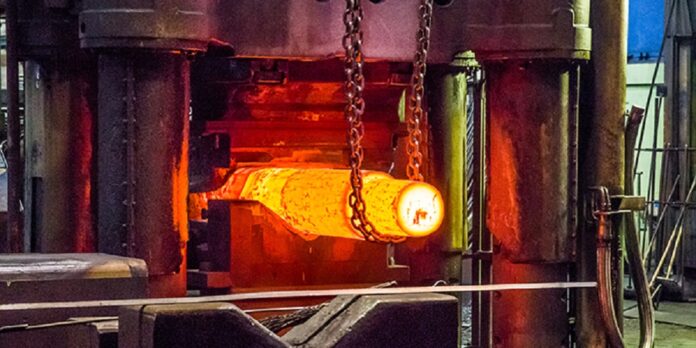Metal is shaped into various shapes through industrial forging, including gears, axles, crankshafts, and other parts used in machinery and equipment. The process involves the application of heat and pressure to deform the metal, which is then shaped using dies and other tools. The industrial forging procedure, essential design factors, and advantages of using industrial forging in metalworking applications will all be covered in this article.
Industrial Forging Process
The following steps are typically included in the industrial forging process:
- Material Choice: The first step in the industrial forging process is choosing the right metal alloy for the intended application. When choosing the material, aspects like strength, durability, and corrosion resistance are considered.
- Preheating: Metal is heated in the furnace to a temperature that enables it to be bent without breaking or cracking.
- Deformation: Pressure is applied to the heated metal mounted on a forging press. The metal is deformed into the desired shape as it cools.
- Finishing: The part is cleaned, examined, and finished per the customer’s requirements.
Key Considerations in Process Design
A successful industrial forging operation depends on several critical process design considerations. These consist of the following:
- Material Selection: The performance and durability of the finished product depend on selecting the appropriate material for the intended application.
- Temperature Control: Precise temperature control is crucial to avoid metal breaking or cracking during the forging process.
- Die Design: The forging die or tool ensures accurate metal shaping into the desired form.
- The capacity of the Forging Press: The capacity must be sufficient to handle the size and weight of the forged metal.
Benefits of Industrial Forging
For applications involving metalworking, industrial forging has several advantages, including:
- Strength and Durability: Industrial forging produces stronger and more durable parts compared to other manufacturing processes.
- Precision Tolerances: Industrial forging can create components with precise tolerances, obviating the need for further machining or finishing.
- Cost-Effective: Producing large quantities of parts using industrial forging can be cost-effective.
- Flexibility: Industrial forging is a flexible manufacturing process that can create parts in various sizes and shapes.
Applications of Industrial Forging
Industrial forging is a versatile manufacturing process with numerous applications in various industries, including hardware and fasteners, electrical products, and terminals.
Hardware and Fasteners:
Industrial forging in the hardware and fastener industry creates durable and high-strength fasteners, bolts, nuts, and screws. The forging process creates a tight grain structure in the metal, resulting in greater strength and resistance to wear and tear.
Electric Products and Terminals:
In the electrical products industry, industrial forging is used to manufacture terminals, connectors, and other electrical components. These components require high precision and durability to withstand the rigorous demands of the electrical industry.
Conclusion
In conclusion, industrial forging is a robust manufacturing process that allows for shaping metal into various forms, including gears, axles, crankshafts, and other components. Manufacturers can ensure successful forging operations and high-quality finished products by understanding the industrial forging process and key considerations in process design. With its many benefits, including strength and durability, precise tolerances, cost-effectiveness, and flexibility, industrial forging is a versatile manufacturing method with numerous applications across various industries. Manufacturers can produce durable and high-quality metal parts for their applications by utilizing industrial forging.




